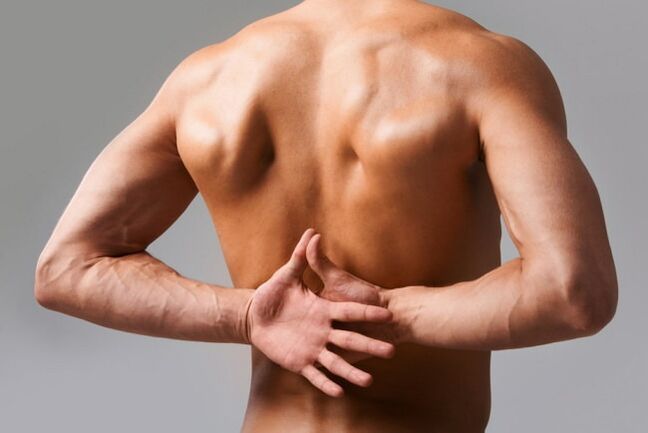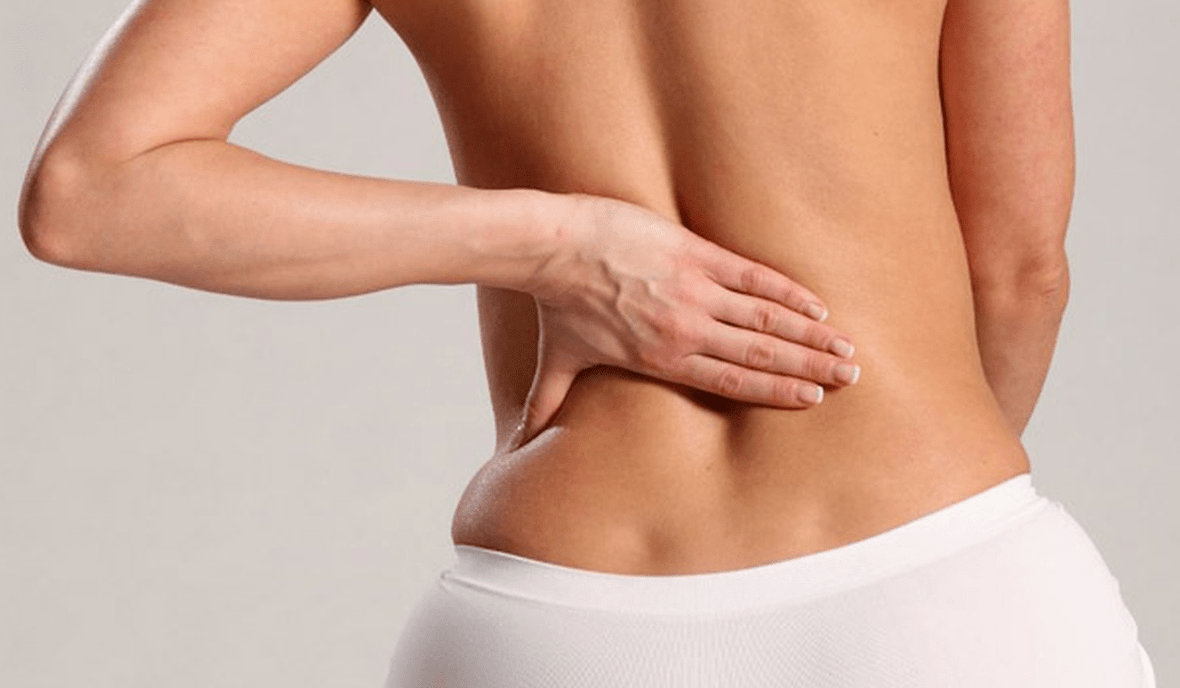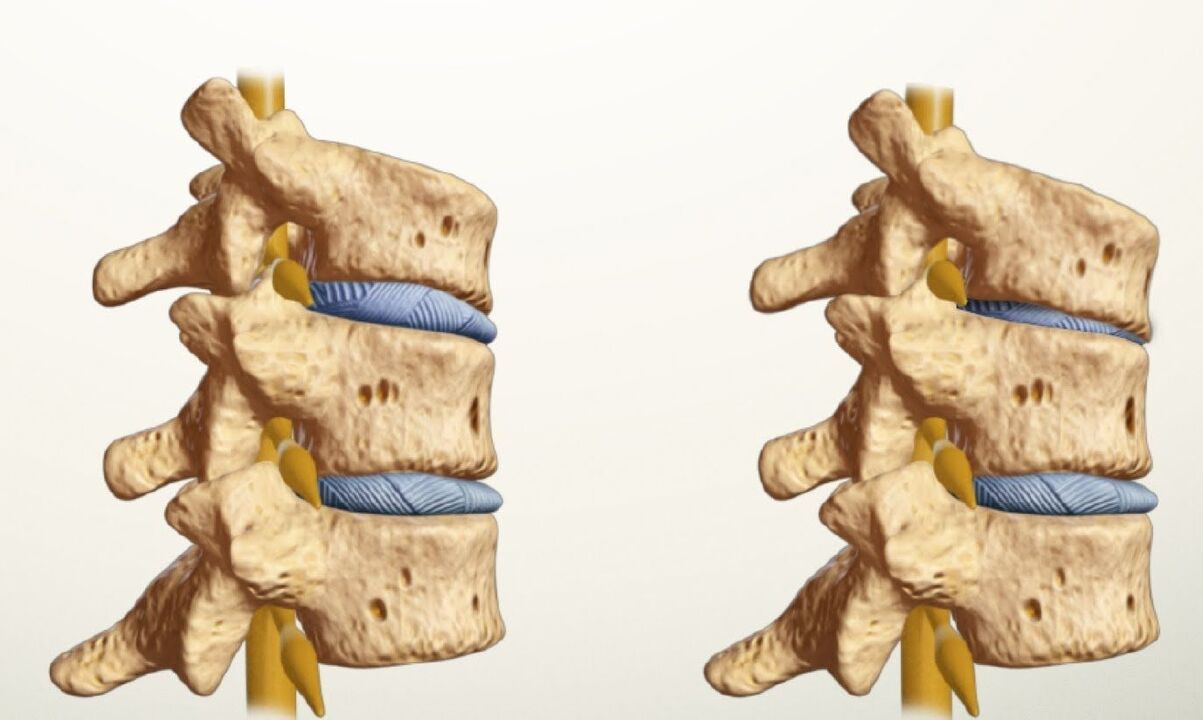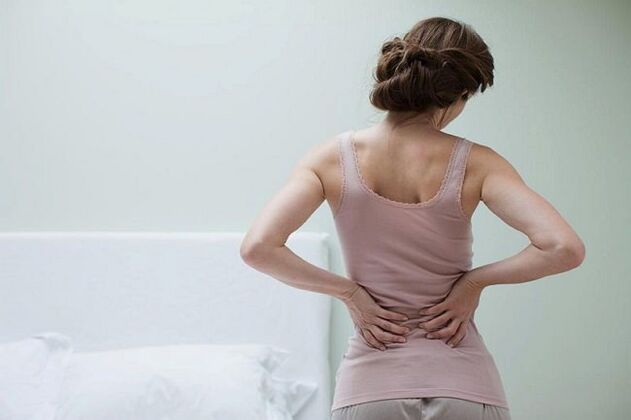Lumbar spine osteochondrosis is a pathological change in the cartilage and bone tissue of the intervertebral discs in the lumbosacral spine. This change may be natural or the result of an unhealthy lifestyle. In old age, involutional processes of bone and cartilage tissue begin in all people. But when these phenomena are premature (appear in middle age), then we are talking about pathological processes of the skeletal system. The pathology affects both men and women over 30 years of age.
Lumbar osteochondrosis is the most well-known and most common disease of the spine, which is manifested by severe pain in the lumbar region. The disease develops as a result of metabolic disorders, which lead to inadequate nutrition of cartilage and bone tissue, and debris accumulates in bone cells. This leads to pathology of the intervertebral discs. In addition, their thickness and flexibility vary, and then in the vertebrae are formed growths in the form of osteophytes (growth of bone tissue, leading to narrowing of the holes for nerve endings).
Reasons for the development of lumbar spine osteochondrosis
Lumbar osteochondrosis occurs much more often than thoracic or cervical spine osteochondrosis because the lower back has the greatest load when walking and running, with prolonged sitting in a chair or lifting weights.

Since this anatomical site receives the maximum load, its structure is very strong and reliable. The lumbar region consists of five vertebrae and connects the thoracic cage with the sacrum. Among them are intervertebral discs, which give the spine flexibility and mobility. Intervertebral discs, on the other hand, consist of a jelly-like nucleus, which is located within a strong annulus fibrosis. When osteochondrosis develops, the normal nutrition of the discs breaks down, as a result they become thinner, lose elasticity and the distance between them is reduced. As a result, the nerve roots are damaged, which leads to severe pain and even disability.
So, the reasons for the development of this pathology are:
- spinal cord injury;
- diseases of the endocrine, digestive and cardiovascular systems;
- intense physical activity (lifting weights, strenuous running);
- sedentary lifestyle;
- hormonal system dysfunctions;
- flat feet;
- intervertebral disc abnormalities;
- old age;
- inflammatory diseases of the joints, such as rheumatoid arthritis.
Risk factors for the development of the disease are:
- weak flexion and posture;
- wrong lifestyle;
- unhealthy diet, obesity;
- wrong attitude for a long time;
- hereditary factor;
- stress;
- hypothermia.
The main symptom of the disease is back pain. It can be felt immediately or after intense physical activity.

Other symptoms of lumbar osteochondrosis are:
- aching pain radiating to the lower back;
- increased pain after lifting weights, sneezing, coughing, body movement;
- stiffness in the body after staying in one position for a long time;
- persistent back muscle spasms;
- sudden painful sensation (lumbago) after hypothermia of the body;
- violation of sensitivity in the buttocks, thighs, legs and feet;
- paresis of the feet;
- cooling of the feet;
- spasms of the arteries of the legs;
- excessive sweating;
- dryness and peeling of the skin at the sites of pain.
Lumbar spine osteochondrosis can be made worse by any difficult movement, for example, when you move or turn your body to the side. In this case, the pain is noticed not only in the lower back, but also in the legs. There is also a strong lumbar spasm, as in this way the body eases the load on this part of the body. During a deterioration, a person finds a comfortable position for himself in which the pain subsides.
One of the complications of lumbar spine osteochondrosis is a malfunction of the genitourinary system. Sometimes there is increased urination and discomfort in the kidney area. Inflammation of the sciatic nerve and lumbodynia (pain in the lower back) can join the disease.
Stages of lumbar spine osteochondrosis
Unfortunately, osteochondrosis is an incurable disease and the process of destruction of intervertebral discs is irreversible. There are four stages in the development of osteochondrosis:

- The first stage, in which the jelly-like nucleus within the disc changes and moves.
- The second stage is the period of destruction of the annulus fibrosus in the disc;
- The third stage, in which the annulus fibrosus splits and the jelly-shaped nucleus leaves it, which causes the formation of a disc herniation.
- The fourth stage is the period of development of degenerative processes of the vertebrae with the involvement of intervertebral joints and ligaments. Osteoarthritis of the intervertebral joints (spondyloarthritis) develops.
First step
It is characterized by painful sensations due to irritation of nerve endings located in the annulus fibrosus and longitudinal ligaments. The patient feels pain and discomfort in the affected disc section. The pain can be sharp, acute or dull, is permanent and is localized in the lumbosacral segment. Too often it is released on foot, and sometimes felt only on foot.
Irritation of nerve endings leads to the development of reflex syndromes. For this reason, a person does not always feel pain in the problem area, but far beyond it. Also, there is a violation of the robots of internal organs, the appearance of reflex muscle spasm; circulatory disorders of the limbs and ligaments. Violation of blood circulation and nutrition of tendons and ligaments, which leads to pain and stiffness at the sites of attachment to the bones.
The second degree
At this stage, there is a characteristic instability and an increase in vertebral mobility, leading to constant muscle lubrication. At the same time, it is difficult for a person to stand up, he feels discomfort and pain in the lower back. Sometimes the lower back "hurts" and the patient does not understand why.
Third degree
It is characterized by prolapse of disc fragments, which are manifested by compression of nerve roots. During this period, there is a violation of sensitivity in the area of innervation of the compressed nerve. In addition, there are unpleasant sensations in the form of tingling, burning, numbness, as well as complete loss of sensation, which is associated with impaired motor function, sometimes leading to paralysis. Muscle atrophy, thinning and reduction is observed in the affected area. The areas where the above changes are observed eloquently indicate the location of the spinal cord lesion. A characteristic manifestation of the third degree is the appearance of Lasegue symptom. It manifests itself as follows: when the patient is lying on his back, one leg straight up, there is severe pain in the lumbar region, which spreads along the back of the raised leg. When the legs bend at the knees, the pain subsides immediately.

When fragments of intervertebral discs fall into the lumen of the spinal canal, spinal cord injury occurs. Another syndrome, the so-called ponytail, is manifested by impaired sensitivity and motor function of the legs as well as the pelvic and bladder organs.
Fourth degree
This period is characterized by the disappearance of pain and the restoration of the function of the musculoskeletal system. However, at the same time, there is a limitation of motor function. The back, as it were, is made of wood, as the fibrosis of the disc develops and all its elements are replaced with dense scar tissue. At the same time, the inflammatory process involves the ligaments and intervertebral joints and different degrees of the disease are observed, which are manifested by polymorphism of symptoms.
How to treat lumbar spine osteochondrosis
Treatment of lumbar spine osteochondrosis is a very long and continuous process. And most importantly, for the successful treatment of a disease, much depends on the person himself. After all, he will have to radically change his lifestyle and get rid of a lot of daily habits, as well as work on his health for the rest of his life.
Otherwise, even successful drug treatment will not be able to completely eliminate spinal deformity. In addition, after a temporary improvement, the symptoms will return with a new intensity and treatment will have to start all over again. Although sometimes, even with adherence to the regime of physical activity, attacks of osteochondrosis occur.
Thus, the treatment of osteochondrosis is performed in 3 ways:
- conservative drug treatment;
- non-drugs;
- surgery.
Conservative drug treatment
Since osteochondrosis of the spine can not be completely cured and is an irreversible process, the goal of conservative treatment is to eliminate the symptoms and prevent further progression of the disease. Before starting drug treatment, it is necessary to minimize physical activity. In case of severe irritation, bed rest is recommended. This is sometimes more effective than medication.
To relieve the symptoms of inflammation, use:
- NSAIDs (non-steroidal anti-inflammatory drugs). Drugs of this group effectively eliminate pain and inflammation in the vertebrae. Medications can be in pills or injections.
- Glucocorticosteroids. These drugs are classified as steroid hormones. Glucocorticosteroid injections are given directly into the ankle cavity. Without fail, they are supplemented with B vitamins (B1, B6, B12).
- Soothing. They are needed to eliminate the associated reflexogenic and psychogenic disorders.
- Anticonvulsants. Eliminate involuntary skeletal muscle contractions.
- Antidepressants. Drugs of this group affect the level of neurotransmitters, as a result the patient's mood improves, melancholy, anxiety and emotional stress disappear.
- Diuretic drugs. They are necessary for the signs of radicular syndrome.
- Anticholinesterase drugs. Drugs of this group inhibit the activity of the enzyme cholinesterase, as a result, increases the conduction of nerve impulses.
- Chondroprotectors. Needed to prevent deformation of vertebral discs and joints.
In an acute attack, novocaine blockade (introduction of anesthetic drugs directly into the affected area) is prescribed.
The symptoms of lumbar osteochondrosis in women manifest differently than in men. In women, the menstrual cycle can be disrupted, as well as gynecological diseases can develop: inflammation of the ovaries and uterus (endometritis). Reproductive damage can also occur. In this case, you need the help of a qualified gynecologist.
How to treat lumbar osteochondrosis at home
The main principle of home treatment is the elimination of symptoms that prevent a person from living a quality lifestyle.
The following methods of treatment are used at home:
- Diet. Very often the cause of osteochondrosis is the accumulation of cholesterol and loss of elasticity of blood vessels. To correct the situation, it is necessary to adhere to a low-fat diet. Also exclude from the diet foods with high cholesterol levels: eggs, pork, rich juices, chicken skin. Completely eliminate alcohol and nicotine, reduce consumption of strong coffee and tea. They lead to vasospasm.
- Restoration of blood supply to the lumbar region. To do this, use both rubbing with ointments and medicinal compresses, as well as physiotherapy exercises, which can be performed at home.
- Orthopedic tools for sleep. Since the spine is the axis of the human body, which suffers great stress during the day, it needs proper rest. Orthopedic mattresses and pillows operate in this capacity, which are able to give the spine the right position during sleep.



































